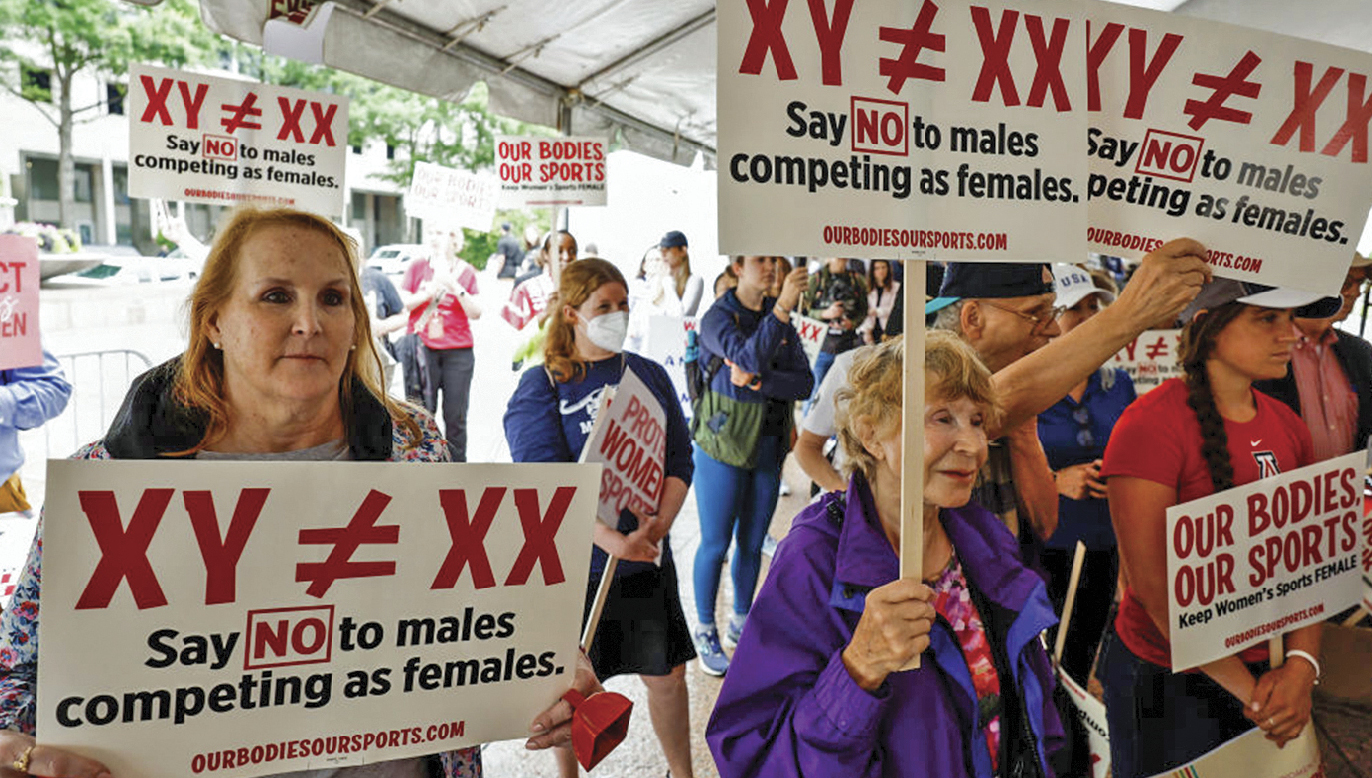Acting in the Best Interests of Gender Equity in Athletıcs
March 31, 2023
Enlightened leadership at the forefront of balancing the needs of boys and girls in scholastic sports
When the Housatonic Valley Regional High School alumni association approached Anne MacNeil, athletic director at the school in Falls Village, Conn., about raising money for improvements to the baseball field, she had one request.
“I said ‘Awesome, but we also have to look at the softball field,’” MacNeil recalled recently.
Located an hour west of Hartford, Housatonic, enrolling 300 students, is a secondary school with a rich history in sports. Two alumni, John Lamb and Steve Blass, went on to play baseball for the Pittsburgh Pirates. The school won three state championships in the 1980s, twice for girls track and once for golf.
Housatonic also gained some notoriety as part of a co-op football team that hired the first female head coach of a high school football team in Connecticut.
This Content is Exclusive to Members
AASA Member? Login to Access the Full Resource
Not a Member? Join Now | Learn More About Membership
Despite Outside Pressures, Districts Lend Backing to Transgender Student Athletes

At the 300-student Housatonic Valley Regional High School in Connecticut, students are allowed to play on teams of whatever gender they identify with. Currently, two nonbinary students are playing interscholastic volleyball.
That practice stems from the school district’s desire to ensure every student feels safe and comfortable in school, according to Athletic Director Anne MacNeil. To particularly support nonbinary and transgender athletes, the school renovated both boys’ and girls’ locker rooms, took out the mass showers and added several changing rooms.
“If a student doesn’t feel comfortable changing in front of people, there are places within those locker rooms to have some privacy,” MacNeil says. When athletes travel, the school makes sure to tell opposing teams if a student will need accommodations.
High-Profile Litigation
MacNeil’s emphasis on accommodating transgender and nonbinary students reflects how she feels about high school sports. “We’re education-based athletics,” she says. “Winning is nice and winning is a goal, but it’s not the end-all, be-all goal. There’s a lot more that we do in education-based athletics with life lessons and the teamwork and the confidence that you can achieve on the sports field.”
The school district hasn’t received any pushback from the wider community for its accepting stance, MacNeil says.
But other districts in Connecticut have fielded pressure from outside forces for enabling transgender students to participate in sports. A case that received national attention for its claims that Connecticut violated Title IX by allowing transgender students to participate on the girls’ track and field team could be the first in the country to give the U.S. Supreme Court the opportunity to weigh in on transgender students’ rights to play sports. The plaintiffs in the lawsuit, filed in 2020, argue that two transgender athletes on a high school track team affected the collegiate recruiting opportunities and the place of finishes for three cisgender athletes.
Betsy DeVos, the U.S. education secretary during the Trump administration, lent her voice of support to the lawsuit against state athletic associations and five local school districts, but the Biden administration has withdrawn the federal government’s backing.
Currently, 18 states ban transgender student athletes from participating in sports consistent with their gender identity, according to Movement Advancement Project, a think tank that tracks laws on equity issues. That prevents school districts in those states from legally allowing transgender athletes from competing.
Support in Phoenix
After Arizona banned transgender girls from playing on sports teams of the gender they identify with in spring 2022, the leadership of the Phoenix Union High School District, the third largest district in Arizona with 28,000 students at 20 schools, wanted to let transgender athletes know they were supported. Last spring, the school board unanimously approved a resolution denouncing the state legislation.
The state law banning transgender female athletes doesn’t impact that many students, Phoenix Superintendent Chad Gestson acknowledges. The Arizona Interscholastic Association reported about 16 transgender athletes of about 170,000 high school athletes in the state had received waivers since 2017 to play on teams that align with their gender identities.
To those few students, however, it means a lot knowing they have their school system’s support, Gestson says.
“We know to those students who are transgender, it’s one of their most important issues,” he says. “We think it’s important to stand behind our students.”
— Jacqueline Palochko
Students’ Prize-Winning Sports Photography
Most of the sports photography appearing in this issue of School Administrator is the work of high school photographers who received recognition in scholastic journalism competitions sponsored by the Journalism Education Association and the Association of Texas Photography Instructors. Special thanks to Bradley Wilson, editor of JEA’s quarterly journal, for facilitating the use of these images.
Other photos of high school sports and spectators were provided by Sophie Pallman, a student sports photographer at Arapahoe High School in Centennial, Colo., and Kim Vogel of the National Federation of State High School Associations.
Advertisement
Advertisement
Advertisement
Advertisement
